The row of jeeps set out early in the brisk morning desert air.
For hours, they climbed over rock and hill, weaving around perilous stretches of mountain road as they made their way through the barren landscape of Israel’s Negev Desert.
Tall, barbed wire fencing delineating the Egyptian border, with strange-looking watchtowers, occasionally break up the eerie desolation of the scenery.
“This is the Wild West,” our tour guide, Nadav, said as the target of the journey came into view.
The mysterious Mount Karkom lies in an extremely remote part of the southwestern Negev. It sits at over 847 meters (2,779 ft.) above sea level and is only accessible via jeep or by foot after several days of trekking.
But it is well worth the journey.
The mesa-like mountain holds thousands of ancient rock engravings, hundreds of places of worship, and a wealth of archaeological findings that show that humans may have lived there as far back as 30,000 years ago, long before Moses would make his legendary ascent.
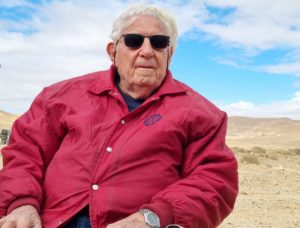
Professor Emmanuel Anati, 91, sits at the base of Mount Karkom as hundreds prepare to climb up the mountain he first excavated in 1954, on Dec. 21, 2021. (Maya Margit/The Media Line)
Retired professor Emmanuel Anati was the first archaeologist ever to excavate Mount Karkom and discovered rock engravings on the mountain’s plateau in 1954.
“I conducted a systematic archaeological survey here,” Anati told The Media Line, while sitting at the foot of the mountain. “I worked on this mountain for 40 years. We registered, described, learned and researched over 1,350 sites,” he also said.
“In the beginning of our research, we were curious to learn about the connection between the rock drawings – there are roughly 40,000 in all – and the structures located near them,” he explained.
Anati’s initial survey of the fascinating rock drawings that pepper the area eventually became subsumed by an even greater quest. The Italian-Israeli researchers became convinced that Mount Karkom was the site of the biblical Mount Sinai.
This holiday season, give to:
Truth and understanding
The Media Line's intrepid correspondents are in Israel, Gaza, Lebanon, Syria and Pakistan providing first-person reporting.
They all said they cover it.
We see it.
We report with just one agenda: the truth.
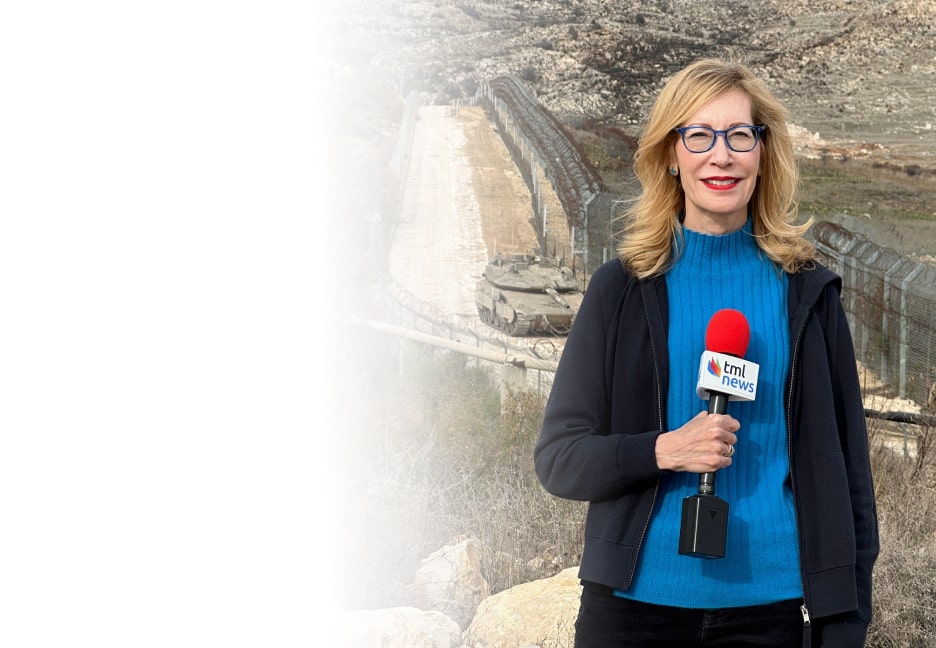
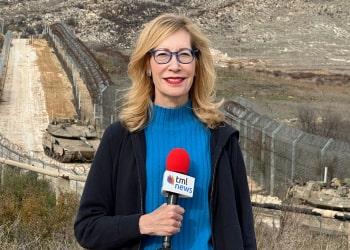
“What was most convincing is the topography of the site,” he said. “Moses is described as easily going up and down the mountain twice a day. There are specific paths and valleys all around that could hold all the tribes. Around the mountain we found camps where people used to live and on the mountain itself there are several places of worship.”
And yet it is difficult to believe that anyone would choose to live in such a barren landscape, with little water and barely any vegetation in sight.
According to Anati and paleoclimatologists, thousands of years ago the Negev was significantly greener than it is today due to more rainfall.
“Later on, everything stopped likely as a result of climatic changes that prevented people from living in this part of the desert at all,” Anati said.
In spite of its forbidding surroundings, Mount Karkom is quickly becoming a big draw for tourists.
Though normally closed to the public midweek due to Israel Air Force training exercises in the area, this year an exception was made so that hikers could come and see the so-called “Burning Bush” phenomenon.
On the shortest day of the year, December 21, a glowing halo of light appears in the hole of the mountain’s rock cliff, which some say is evocative of the biblical story of Moses and the burning bush, which also is said to have taken place on Mount Sinai.
Hundreds of avid Israeli hikers and curious onlookers recently made the trek in order to witness the rare phenomenon.
“Looking 30 years back, this was never happening here,” Dr. Shahar Shilo, a historian and director of tourism at the Friendly Negev Desert association, told The Media Line, in reference to the surprisingly large crowds.
“This is a huge amount of people coming on a one-day tour … We never expected Mount Karkom to be [so] popular,” he added.
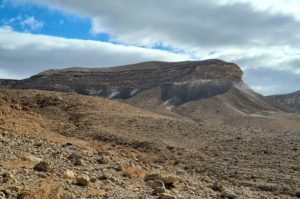
A view of Mt. Karkom, as seen from the bottom of the mountain, on Dec. 21, 2021. (Maya Margit/The Media Line)
While Shilo, who was in the midst of guiding a group, does not necessarily ascribe to Anati’s theories on the biblical nature of Mount Karkom, he acknowledged that the mountain had been sacred for thousands of years. Evidence also shows that scores of people made pilgrimages to the site to mine the valuable flint on its plateau, he said.
“Flint was extremely important at the time because they had no metal,” Shilo said, adding that the mountain is home to a large number of historical and religious sites. “Many of them are temples and some resemble things that we know from the Bible or biblical archaeology, such as the 12 pillars altar,” he said.
Shilo was referring to a site at the foot of the mountain that is made up of 12 standing stones. The pillars were discovered by Anati in 1983 and are reminiscent of Exodus 24:4, which says that Moses “got up early the next morning and built an altar at the base of the mountain, along with 12 pillars for the 12 tribes of Israel.”
Despite the wealth of findings on and around the mountain, it has been a steep uphill battle for Anati to convince others that Mount Karkom is in any way connected to the biblical “Mountain of God.”
Some historians maintain that the story from the Book of Exodus, if it indeed took place, occurred sometime between 1,600 BCE and 1,200 BCE. Most of the archaeological findings unearthed at Mount Karkom are dated to roughly 2,000 BCE, however.
Nevertheless, Anati believes that the accepted dates are all wrong.
“The accepted theory is that if there was an exodus from Egypt then it took place during the Late Bronze Age,” Anati said. “There is not a single remnant from that period not only here at Mount Karkom, but also in the entire Sinai Desert. This means that the entire area was empty at that time,” he added.
“The Late Bronze Age is not the right period for all the stories in the Bible about the Midianites, the Amalekites and the tribes of Israel. These stories happened earlier,” he asserted.
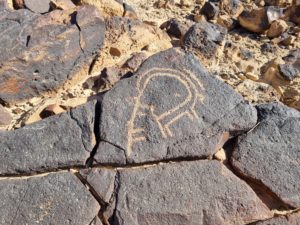
A rock engraving showing an ibex on Mt. Karkom. Several of the rock drawings at the site portray ibexes. (Maya Margit/The Media Line)
While no one knows where the true site of Mount Sinai is located, or whether it exists at all for that matter, several summits have laid claim to being the place where Moses received the Ten Commandments. Possible locations are scattered throughout Saudi Arabia, Jordan and Egypt’s Sinai Peninsula – including perhaps the most famous, Jabal Musa, which literally means “Mountain of Moses.”
None of these disputes have so far managed to deter Anati, 91, who believes that historians and archaeologists will eventually come to see things his way.
“The findings prove that this mountain was sacred to many peoples, not just the people of Israel,” he said. “There are over 150 places of worship on this mountain. I’ve reached the conclusion that, without a doubt, Mount Karkom is Mount Sinai. Even those who doubt this now will become convinced sooner or later because there is no other place that is more suitable than Mount Karkom.”